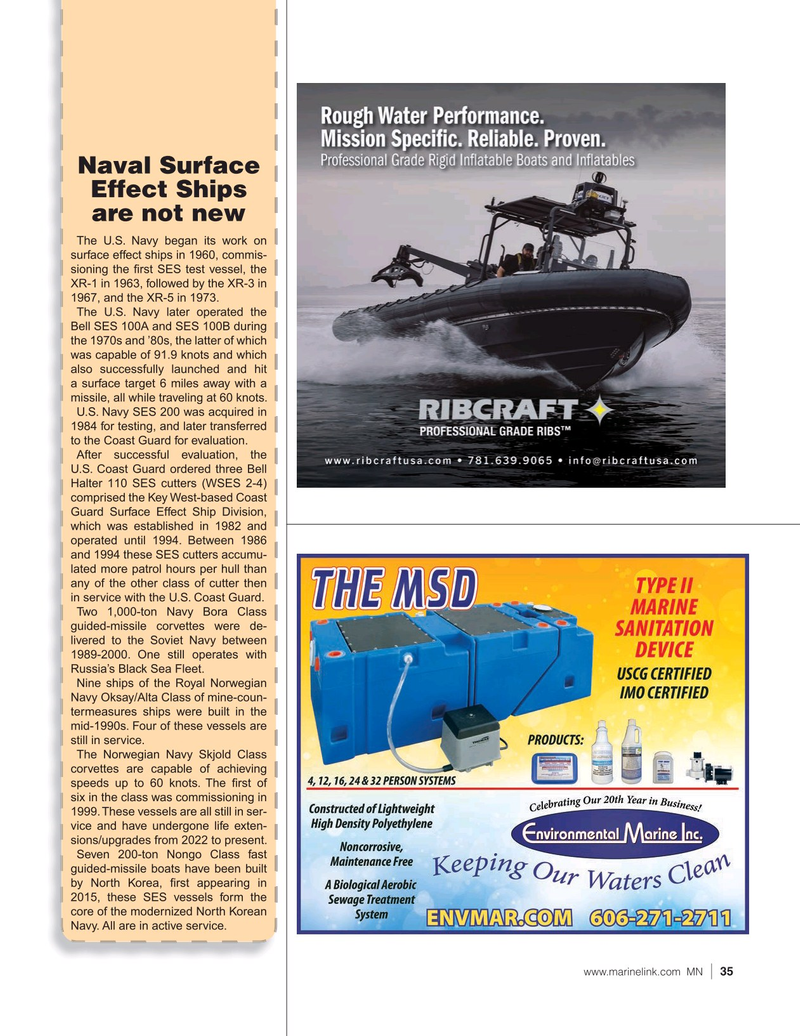
Page 35: of Marine News Magazine (November 2024)
Read this page in Pdf, Flash or Html5 edition of November 2024 Marine News Magazine
Naval Surface
Effect Ships are not new
The U.S. Navy began its work on surface effect ships in 1960, commis- sioning the ? rst SES test vessel, the
XR-1 in 1963, followed by the XR-3 in 1967, and the XR-5 in 1973.
The U.S. Navy later operated the
Bell SES 100A and SES 100B during the 1970s and ’80s, the latter of which was capable of 91.9 knots and which also successfully launched and hit a surface target 6 miles away with a missile, all while traveling at 60 knots.
U.S. Navy SES 200 was acquired in 1984 for testing, and later transferred to the Coast Guard for evaluation.
After successful evaluation, the
U.S. Coast Guard ordered three Bell
Halter 110 SES cutters (WSES 2-4) comprised the Key West-based Coast
Guard Surface Effect Ship Division, which was established in 1982 and operated until 1994. Between 1986 and 1994 these SES cutters accumu- lated more patrol hours per hull than any of the other class of cutter then in service with the U.S. Coast Guard.
Two 1,000-ton Navy Bora Class guided-missile corvettes were de- livered to the Soviet Navy between 1989-2000. One still operates with
Russia’s Black Sea Fleet.
Nine ships of the Royal Norwegian
Navy Oksay/Alta Class of mine-coun- termeasures ships were built in the mid-1990s. Four of these vessels are still in service.
The Norwegian Navy Skjold Class corvettes are capable of achieving speeds up to 60 knots. The ? rst of six in the class was commissioning in 1999. These vessels are all still in ser- vice and have undergone life exten- sions/upgrades from 2022 to present.
Seven 200-ton Nongo Class fast guided-missile boats have been built by North Korea, ? rst appearing in 2015, these SES vessels form the core of the modernized North Korean
Navy. All are in active service.
35 www.marinelink.com MN |

 34
34

 36
36
